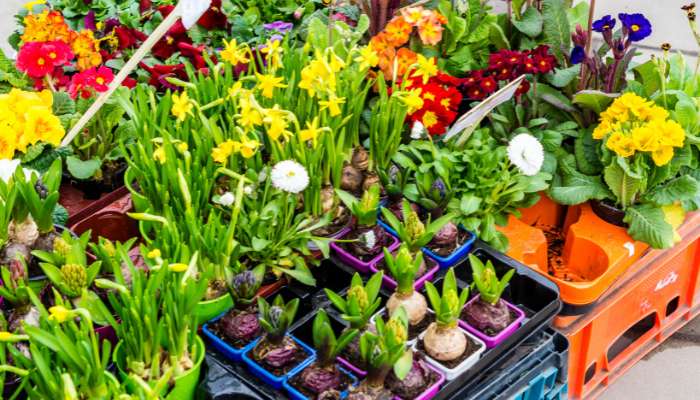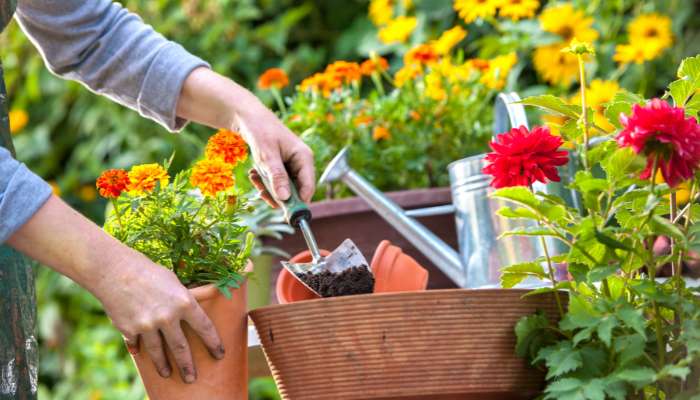Introduction:
Embarking on the journey of flower gardening for beginners can be both exciting and rewarding. Whether you have a spacious backyard or a small balcony, cultivating flowers adds beauty and charm to any outdoor space. In this guide, we’ll delve into ten expert tips to help beginners kickstart their flower gardening journey and achieve stunning results.
Table of Contents
Flower Gardening for Beginners
1. Choosing the Right Location
Selecting the perfect spot for your flower garden is crucial for its success. Opt for an area that receives ample sunlight, preferably at least six hours a day, and has well-drained soil. Ensure easy access to water for regular watering.
2. Selecting Suitable Flowers
Before diving into planting, research and choose flowers that thrive in your local climate and soil conditions. Consider factors such as sun exposure, water requirements, and bloom time to ensure a vibrant and long-lasting display of blooms.
3. Preparing the Soil
Prepare the soil by removing weeds, rocks, and debris and loosening it to allow for proper root growth. Incorporate organic matter such as compost or aged manure to improve soil structure and fertility.

4. Planting Techniques
Follow proper planting techniques based on the type of flowers you’re growing. Pay attention to spacing recommendations and planting depths to give your flowers ample room to grow and thrive.
5. Watering Wisely
Establish a regular watering schedule, especially during hot and dry periods. Water deeply but infrequently to encourage deep-root growth and resilience to drought conditions.
6. Fertilizing Regularly
Provide your flowers with essential nutrients by fertilizing them regularly throughout the growing season. Choose a balanced fertilizer or one formulated specifically for flowering plants, and follow the manufacturer’s instructions for application.
7. Mulching for Moisture Retention
Apply a layer of organic mulch, such as shredded bark or compost, around your flower garden to help retain soil moisture, suppress weeds, and regulate soil temperature. Mulching also adds organic matter to the soil as it breaks down.

8. Pruning and Deadheading
Regularly prune your flowers to promote healthy growth, maintain shape, and encourage continuous blooming. Deadhead spent flowers to prevent seed production and redirect energy into new growth and blooming.
9. Pest and Disease Management
Monitor your flower garden for signs of pests and diseases, and take prompt action to address any issues. Implement integrated pest management techniques, such as handpicking pests, using insecticidal soap, or introducing beneficial insects.
10. Enjoying the Fruits of Your Labor
Finally, take time to enjoy the beauty and tranquility of your flower garden. Sit back, relax, and revel in the colorful blooms and fragrant scents that you’ve nurtured from seed to blossom.
Flower Gardening for Beginners FAQ:
What are the best flowers for beginner gardeners?
For beginners, easy-to-grow flowers such as marigolds, petunias, zinnias, and sunflowers are excellent choices. These flowers are resilient, low-maintenance, and provide stunning blooms throughout the season.
How often should I water my flower garden?
The frequency of watering depends on factors such as weather conditions, soil type, and plant species. As a general rule, aim to water your flower garden deeply once or twice a week, ensuring that the soil is moist but not waterlogged.
What is the importance of mulching in flower gardening?
Mulching serves multiple purposes in flower gardening, including moisture retention, weed suppression, and soil temperature regulation. It also enriches the soil as it decomposes, providing essential nutrients to your plants.
How can I prevent pests and diseases in my flower garden?
To prevent pests and diseases, practice good garden hygiene by removing debris, weeds, and diseased plant material regularly. Encourage beneficial insects and birds to help control pest populations naturally, and avoid overcrowding plants, which can promote disease spread.
When is the best time to prune flowers?
The best time to prune flowers varies depending on the species and blooming cycle. In general, prune spring-flowering plants after they finish blooming and summer-flowering plants in late winter or early spring before new growth begins.
How can I extend the blooming period of my flowers?
To extend the blooming period of your flowers, deadhead spent blooms regularly to encourage continuous flowering. Additionally, provide adequate water, sunlight, and nutrients to keep your plants healthy and blooming throughout the growing season.
Conclusion:
Embarking on the journey of flower gardening for beginners is a delightful experience filled with learning and joy. By following these ten expert tips and answering common FAQs, novice gardeners can confidently nurture their flower gardens and create stunning floral displays that bring beauty and joy to their outdoor spaces.
















